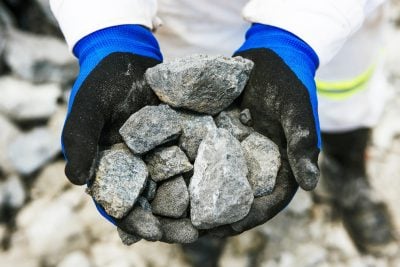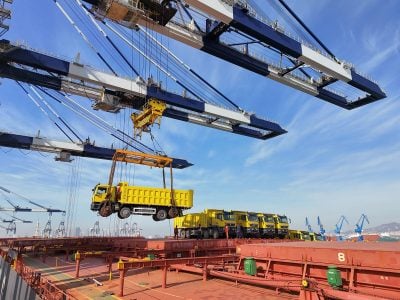Diamond smuggling has to be curbed and official corruption weeded out if the citizens of Sierra Leone are to benefit from their country’s natural resources, argues Julian Lahai Samboma.
If Sierra Leone’s diamond industry is to make a positive contribution to the socio-economic development of the nation, as envisaged in the government’s new five-year National Development Plan, there has to be a radical overhaul of the way the industry is managed.
At the centre of any such strategy should be a concerted campaign to curb the rampant smuggling of diamonds, which leads to tens of millions of dollars of potential tax revenue being lost each year.
Less remarked upon is the fact that official corruption still plagues the industry.
Diamonds were discovered in Sierra Leone in 1930. The 1960s are seen as the post-independence benchmark for probity and proper management of the industry.
By the 1970s and 1980s, due to massive corruption and mismanagement under the All People’s Congress government of Siaka Stevens, most of the country’s gems were being sold abroad illegally.
Statistics show that average official exports under President Stevens and Joseph Momoh, his successor from 1985 to 1992, were below the 200,000 carat mark – barely one-tenth of 1960s figures.
At the height of the so-called “blood diamonds” phenomenon during the civil war in the 1990s, when rebels sold diamonds from the areas they controlled to purchase arms, the UN estimated that the illegal export of diamonds was worth $25m-$125m each year.
In contrast, official exports only amounted to $1m in 1999.
The trend has persisted, despite official exports rising to 289,000 carats (worth $123m) in 2017.

The World Bank estimates that the value of diamonds smuggled out of the country each year is now between 50 and 90% of total production.
Blessing turns to curse
The perpetual refrain from citizens is that the country has nothing to show for its diamond resources, which they say have been a curse rather than a blessing.
Aside from the bloody decade-long war it fuelled, not to mention the rampant smuggling, diamond mining has caused severe environmental degradation to large tracts of land in the eastern Kono district – land that is pockmarked by artificial lakes and ponds which, say locals, could have been put to better use in farming.
“People say our country should be rich with all the diamonds we have,” says local resident Senesie Konomani, “but what about we who live on the very land itself, here in Kono?
“Look at how the land has been destroyed; there is no development. Only smugglers benefit, and the big, fat men in government. We, the people, see nothing.”
According to Michaela Conteh of the National Minerals Agency (NMA), the mining sector’s contribution towards GDP has seen a steady decline over the years, from 27% in 2014 to 5% in 2017.
She described this as unacceptable, and said that the NMA “must work relentlessly to reverse the trend”.
A new director general was recently installed; his responsibilities include curbing smuggling. Julius Mattai vowed to clamp down on “illegal activities”, adding: “I don’t think Sierra Leoneans are deriving the benefits from the mineral resources we’ve been endowed with as a country, and I want to change that.”
Smuggling has been blamed on artisanal miners and on small-scale, illegal mining operations in remote areas that are not regulated by local authorities.
After farming, artisanal mining is the second largest employer of labour in the country, providing a livelihood for up to 500,000 illiterate or poorly-educated day labourers.

Artisanal output accounts for just over 60% of production, with the rest coming from larger-scale or industrial licensees.
Artisanal miners ply their trade in the gravel pits and rivers in the employ of so-called “supporters”, licensees who provide them with tools and food; they get paid a pittance for any finds.
According to the authorities, it is these “supporters” who – in order to evade taxes – sell diamonds illegally to buyers. The latter are the local links in the supply chain to the foreign end user.
The Ministry of Mines and the NMA have embarked on a campaign to arrest and prosecute those who illegally mine or sell diamonds.
Experts such as David Rhode, co-founder of London-based ethical jewellers Ingle & Rhode, say that incentivising people to do the right thing also works.
“While enforcement of the law is always a good thing,” he says, “paying a fair price to artisanal miners or their employers will also do the trick.”
Many observers refuse to believe that the small-scale operator should alone shoulder the blame for “revenue leakages”.
It is an open secret that corruption is deeply embedded in the industry, but there have been no investigations thus far.
Looking the other way
Industry sources say there were cases in the past of less high-profile stones “disappearing”, of functionaries taking bribes to look the other way, and of exploitative agreements with foreign investors being hidden from public scrutiny.
Attempts by independent media to investigate concerns over Sierra Leone’s diamond industry are, even today, routinely – and robustly – rebuffed by functionaries.
The media are now calling on the NMA’s new management to publicly inquire into these and related matters.
The Sierra Leone People’s Party government trumpets the fact that its diamond exports are certified under the Kimberley Process, an international scheme that was instituted in 2003 to reduce the flow of blood diamonds by ensuring that stones only come from government-approved sources.
However, the scheme has a number of flaws. It is designed to verify the origins of batches of Sierra Leone’s diamonds, not the pedigree of individual stones, which greatly impairs its ability to stop smuggling.
It also ignores issues such as the environmental degradation that may have resulted from the mining of the stone, or whether the producers are paid a pittance.
Successive leaders have promised to reform the diamond industry, to make it accountable to the people of the Kono district, and to use the resources for the development of the nation.
President Julius Maada Bio is the latest leader to make those promises. Sierra Leoneans are waiting to see if he will live up to his word.
Want to continue reading? Subscribe today.
You've read all your free articles for this month! Subscribe now to enjoy full access to our content.
Digital Monthly
£8.00 / month
Receive full unlimited access to our articles, opinions, podcasts and more.
Digital Yearly
£70.00 / year
Our best value offer - save £26 and gain access to all of our digital content for an entire year!
 Sign in with Google
Sign in with Google 


